
Whether as a failsafe or as an ongoing option, many schools of all kinds around the world are developing new online courses right now. Transitioning your courses online removes the uncertainty surrounding your operations for new and existing students, and makes it easier for admissions and marketing staff to return their recruitment operations to some kind of normality.
The trouble is, online learning is a very different beast to on-campus study. The unique selling points of your school and programs may change, you might need to target a different audience, and your competitive position in the marketplace could be considerably weaker.
To be successful, your school may need to redefine its student recruitment operations from top to bottom. Here’s how to do it.

Step 1: Redefine Your Student Personas for Online Audiences
We wrote recently about how COVID-19 could completely change many aspects of your student personas, and the move to online learning is one of the principal driving factors behind these changes.
Online learners and those who opt for classroom-based courses are like night and day (sometimes literally). Students looking for an on-campus experience will often want to experience a new city or country, engage in campus life and activities, and make the most of their physical environment for one-to-one interaction and engagement in practical work.
Example: Delfin English School is one of many language schools that has moved to offer courses online in the wake of COVID-19. However, the school has traditionally made the location of its Dublin and London campuses a key part of its value proposition. While travelling is not possible for students, schools like this need to find new ways to promote their benefits.
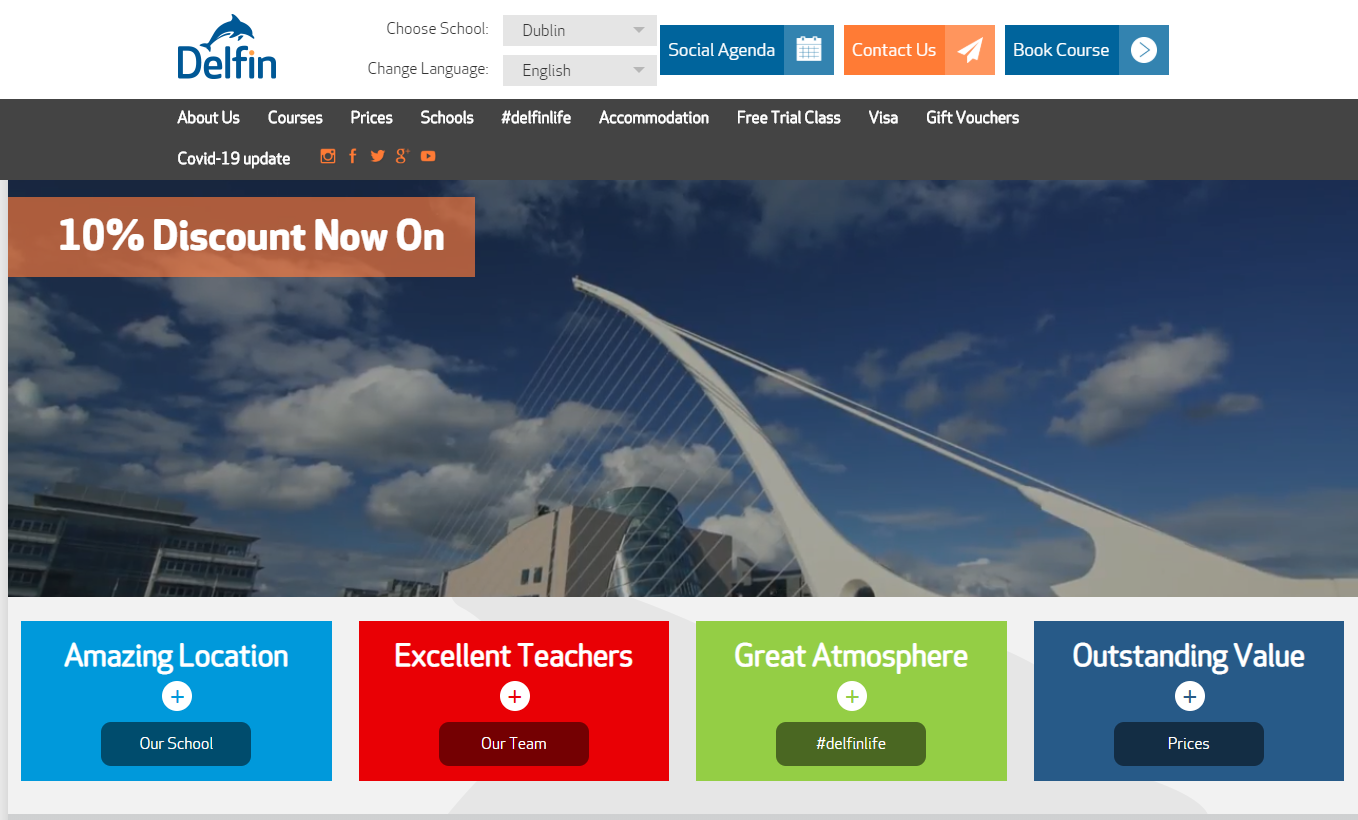
Students interested in studying online are looking for something entirely different. Flexibility, interactivity, and course content are likely to be the primary motivations that drive their decision-making process.
Of course, COVID-19 changes this as well. Some prospects who are now looking to study online are doing so out of necessity, and may even have misgivings about this learning format. Essentially, they are mirrors of your classroom personas, but many of the key motivations they had before are not relevant in the new environment.
If this is the audience your school needs to reach, mitigating the negative impact that transitioning online may have on their desire to study will be the priority. Think about your current setup and what you can do to compensate for some of the things they are missing out on. For instance, you may want to improve your learning management system setup (LMS) so that it facilitates more interactivity and practice-based learning. Or, you may want to create networking and socializing opportunities for prospects in a virtual space.
Example: Penn State University’s Student Services Department has begun organizing a range of virtual events for students during the lockdown, including guided meditation sessions, yoga classes, and virtual tours of city attractions. The school created this new article on their website to spread awareness of their efforts.
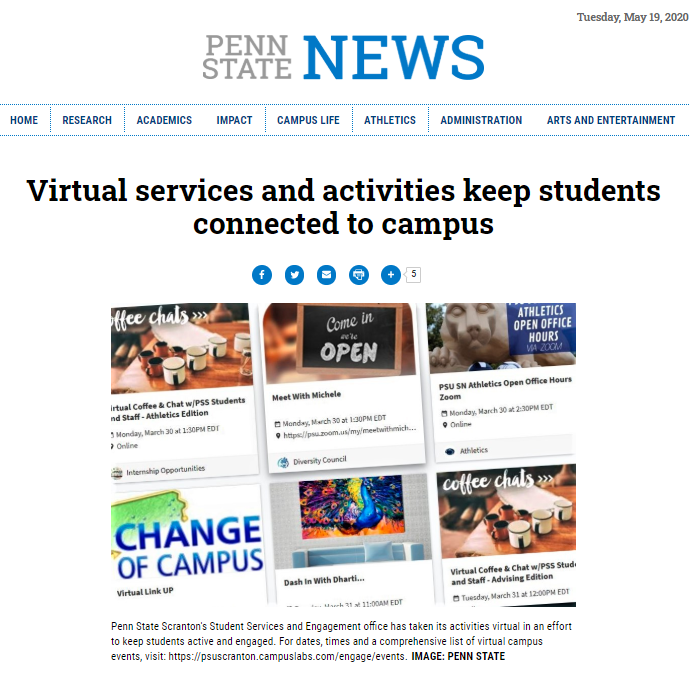
These measures won’t fully make up for all the experiences they might have on your campus, but they might at least make your school the best available alternative for them.
Step 2: Redesign Your Website to Showcase Your Online Learning Functionality
One of the best ways to reassure prospects about the quality and value of your online courses is to properly communicate it to them on your program pages. Rather than simply offering information about what the courses cover and what students will learn, you should take the time to outline how they will learn.
This means showcasing you LMS and how it works, and all the unique features it might offer to make the study experience easier for those who are more used to working in a classroom setting. You can take your cues from experienced online course providers, who will often use videos and visuals to give prospects a glimpse of what their learning environment will look like.
Doing this can help you further emphasize the benefits of online learning as a format, such as the flexibility it offers, the easier and more organized access to learning resources, and opportunities to incorporate game-based learning and other innovative features.
Example: Warwick Business School created this video for its website and YouTube channel about its distance MBA degree. The video not only talks up the benefits of online learning, but also offers glimpses of the LMS for candidates.

One thing you should be very careful about, however, is what you tell prospects regarding flexibility. Many will assume that your online studies can be completed at any time and at their own pace, which might not be the case if you are planning on having live classes with instructors, or need students to work in groups to complete assignments. Being clear about your expectations will ensure you attract leads who are interested in completing the course as you have imagined it.
Step 3: Improve Your Search Visibility for Online Learning Keywords
There is a vast difference in search results for online courses versus search results for other kinds of programs. Specialized online learning providers, as well as schools in your field who have made online programs their focus, will likely have a competitive advantage over you when it comes to search visibility.
Example: In a Montreal-based search for ESL courses, Concordia and McGill Universities enjoy the most visibility for their programs.

However, they are nowhere to be found in a search for online ESL courses, with online course provider edX the most visible choice. This is a simple example, but it illustrates the challenge schools face neatly.
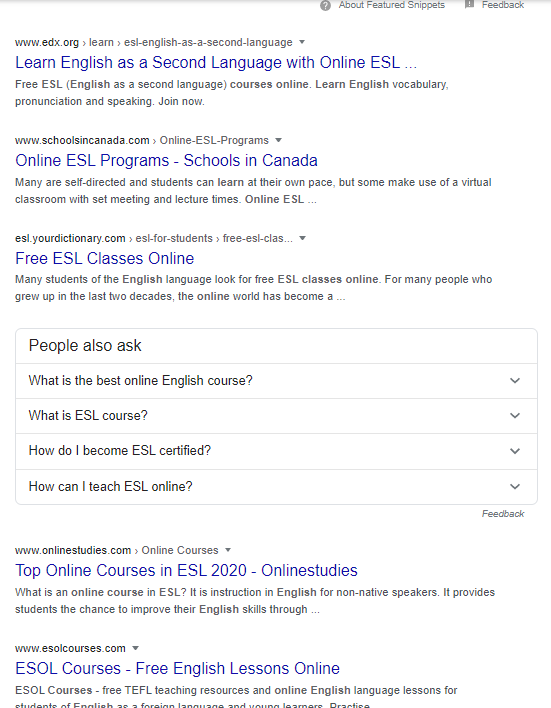
You can help to mitigate this by optimizing your program pages to include relevant keywords for online learning. Work them into your page titles, h1s, h2s, image alt text, and body copy to send a message to search engines that your pages are relevant in these kinds of searches.
Another essential strategy for improving your rankings when marketing new online courses is to create content about them. Your school can produce blogs, videos, infographics and other content to showcase your new courses, promote the advantages of the online learning format, assuage any doubts about the medium, and generally speak to the motivations and concerns of your new prospects.
Example: Since the lockdown, Automotive Training Centres has pivoted towards topics related to online learning in its blog content.
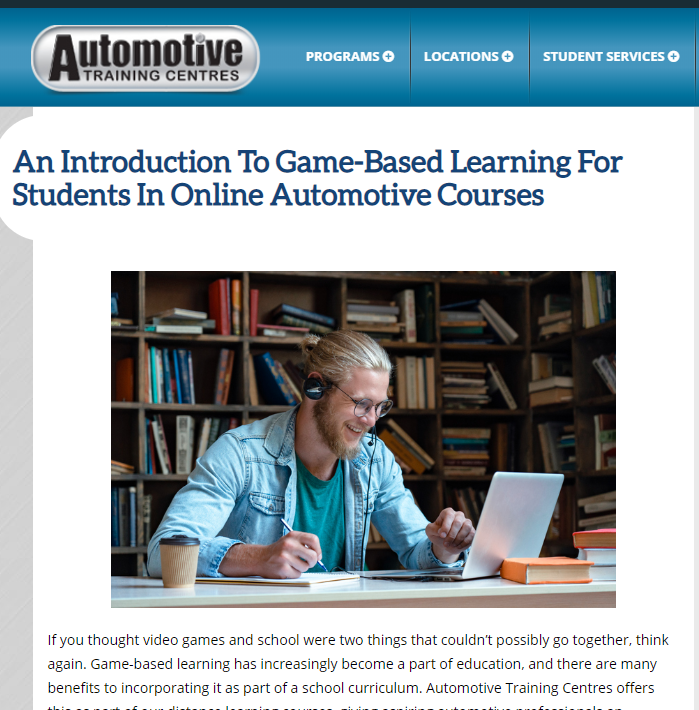
Step 4: Marketing Online Learning Through Social Media
As you begin to flesh out your online course offerings and showcase them through blogs and program pages on your website, you should also be amplifying their reach through social media. Share your pages and posts through Facebook, Twitter, and LinkedIn, and use relevant hashtags to boost their visibility. With the spike in interest in online learning right now, many potential new prospects may be looking for options through these channels.
Additionally, one great advantage of marketing online education over traditional programs is that you are capable of giving prospects a genuine glimpse of what their classes will look like. Your school could create videos, or even host live streams, that offer snippets of your courses, or take potential applicants on a tour of your LMS and other tools you provide to aid the learning process.
Example: Vancouver Island University hosted this information session about its online ESL program through Facebook Live.
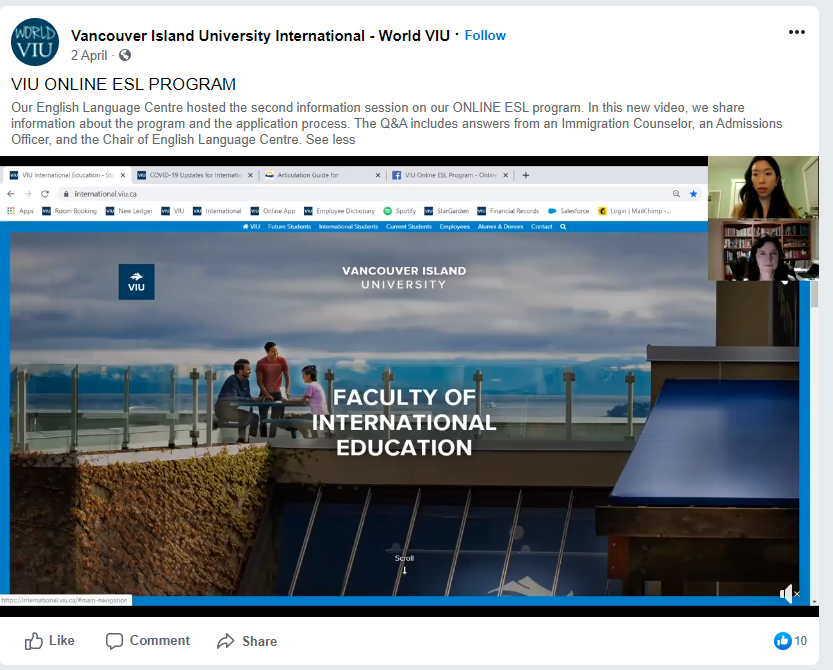
Step 5: Run Paid Advertising Campaigns to Find New Prospects
When promoting new online courses, or any other course for that matter, paid advertising can be an essential means of generating new leads fast. By running campaigns on search engines and social media, you can ‘skip the queue’ in terms of ensuring your courses are seen by relevant prospects while you build their organic reach and visibility.
Example: A number of top business schools use paid search ads to attract leads for online MBA degrees.

While your resources might be a bit stretched right now, a paid campaign can still be very cost-effective. In fact, in some cases you may find that prices for your ads are lower right now than they are in normal circumstances. CNBC reported last month that ad prices on Google, Facebook, and Twitter had all dropped significantly, with businesses in many fields curbing their spending due to the impact the lockdown has had on both their resources and their ability to serve potential customers.
Along with e-commerce and gaming, online education was one of the industries mentioned that has been able to step into the breach and take advantage of cheaper campaigns. This is particularly relevant when it comes to social media advertising, where ad targeting parameters are generally based more on audience attributes than on specific searches and queries. While other types of advertisers have had to remove themselves from the equation, online course providers are able to offer people something they are interested in and able to pursue during the lockdown.
Step 6: Equip Your Team to Follow Up with Prospective Students Remotely
In addition to considering how to market online programs, your school may also need to give some thought to how you are going convert the leads you generate from those marketing efforts into students.
Even if they were able to, prospects who are interested in learning online are unlikely to visit your campus for a tour or open house, attend a physical interview with an admissions representative, or even connect with your school at a recruitment fair or other event.
Because they are looking to study online, prospects will expect most of your follow-up to be online, too. If you’ve relied on physical follow-up heavily in the past, your staff may not be used to nurturing leads successfully this way, and may need tools, training, and patience to do so successfully.
First, it’s important to ensure that your admissions staff are fully equipped to connect with leads remotely, and have the tools to organize their admissions process. A CRM and marketing automation system can be a godsend in this regard, allowing your team to organize and manage its work systematically, automate certain processes, and segment prospects to streamline their follow-up activities.
Example: HEM’s customized Mautic CRM for schools enables shared calendars for admissions teams to keep track of their workload and tasks.
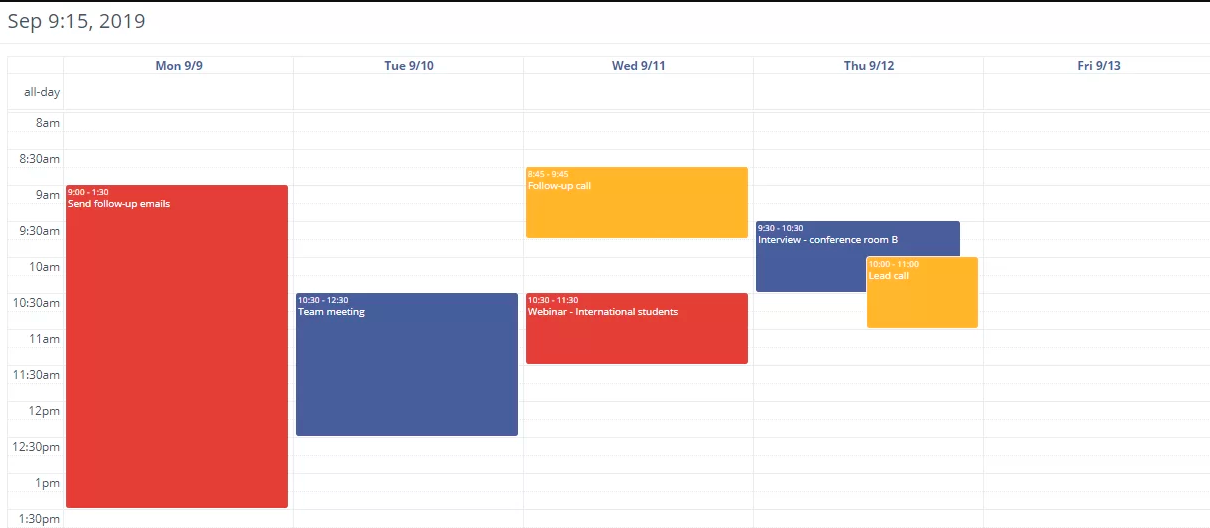
When following up with leads for online courses, email marketing can be a particularly effective tool. Many online learning providers have found creative ways to use this channel, such as offering snippets of their courses for free via email, and hosting webinars to give prospects a further glimpse at their courses.
Example: Professional development course provider Career Foundry offers a free short email course in UX design for leads. Once it is complete, they can opt to sign up for a full course.

It’s equally important to make sure that prospects can apply online. Depending on the level of course you are offering and the admissions criteria, some may expect to be able to book their course immediately on your website. Having an online application portal system in place to do this will help you align your offerings with user expectations.
While leaping into promoting and marketing online courses might seem like a whole new world, particularly if your school wasn’t planning on doing it until COVID-19, it’s important to remember that there are as many similarities as there are differences. It is still student recruitment, after all, and certain tried and tested strategies will serve you just as well in online learning as they did in promoting your classroom-based courses.
Creating accurate personas, using multiple channels for promotion, providing information of real value, and following up diligently with prospects will all help you to make your new online course ventures a success. While the tools may change, the job remains the same.






